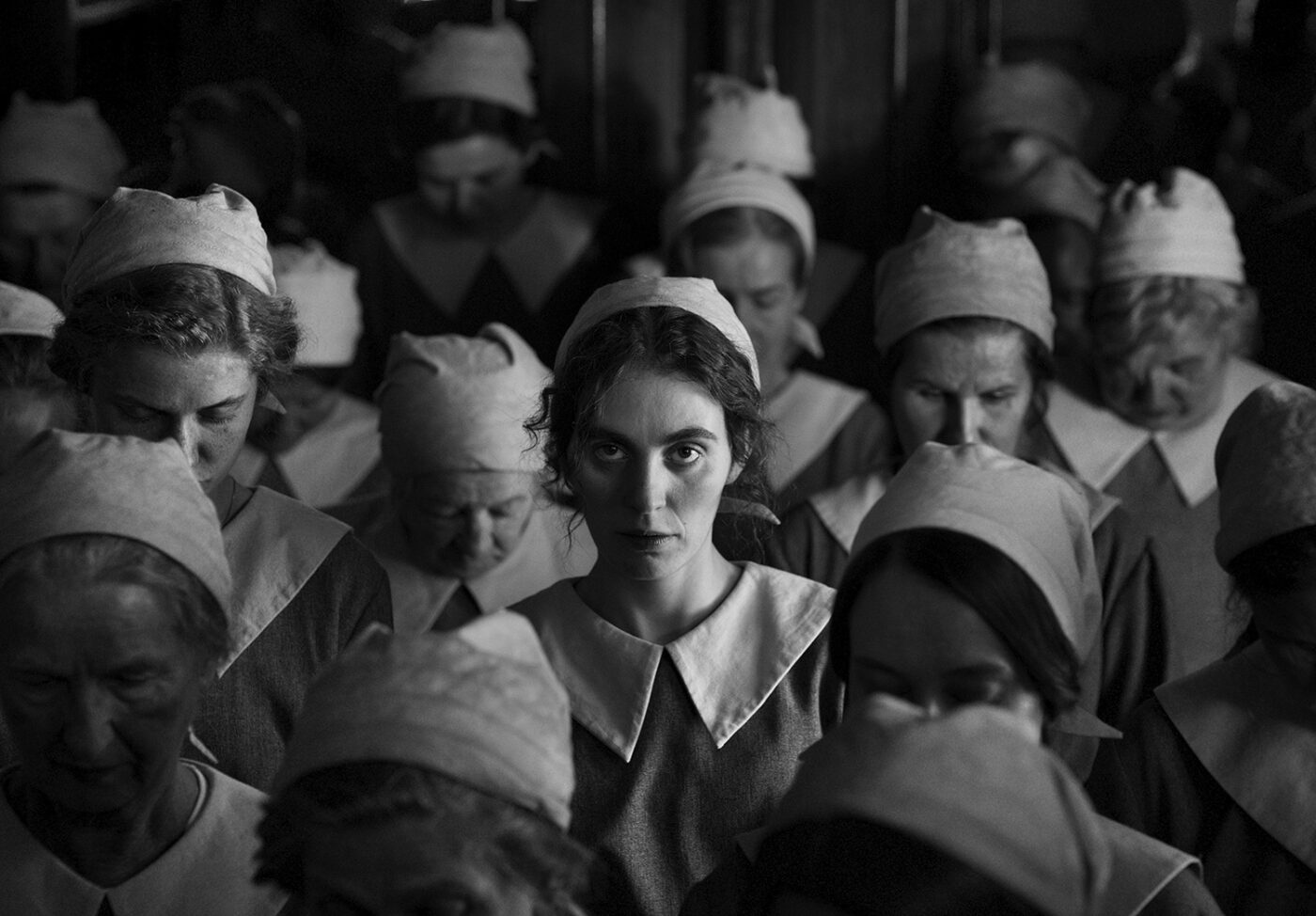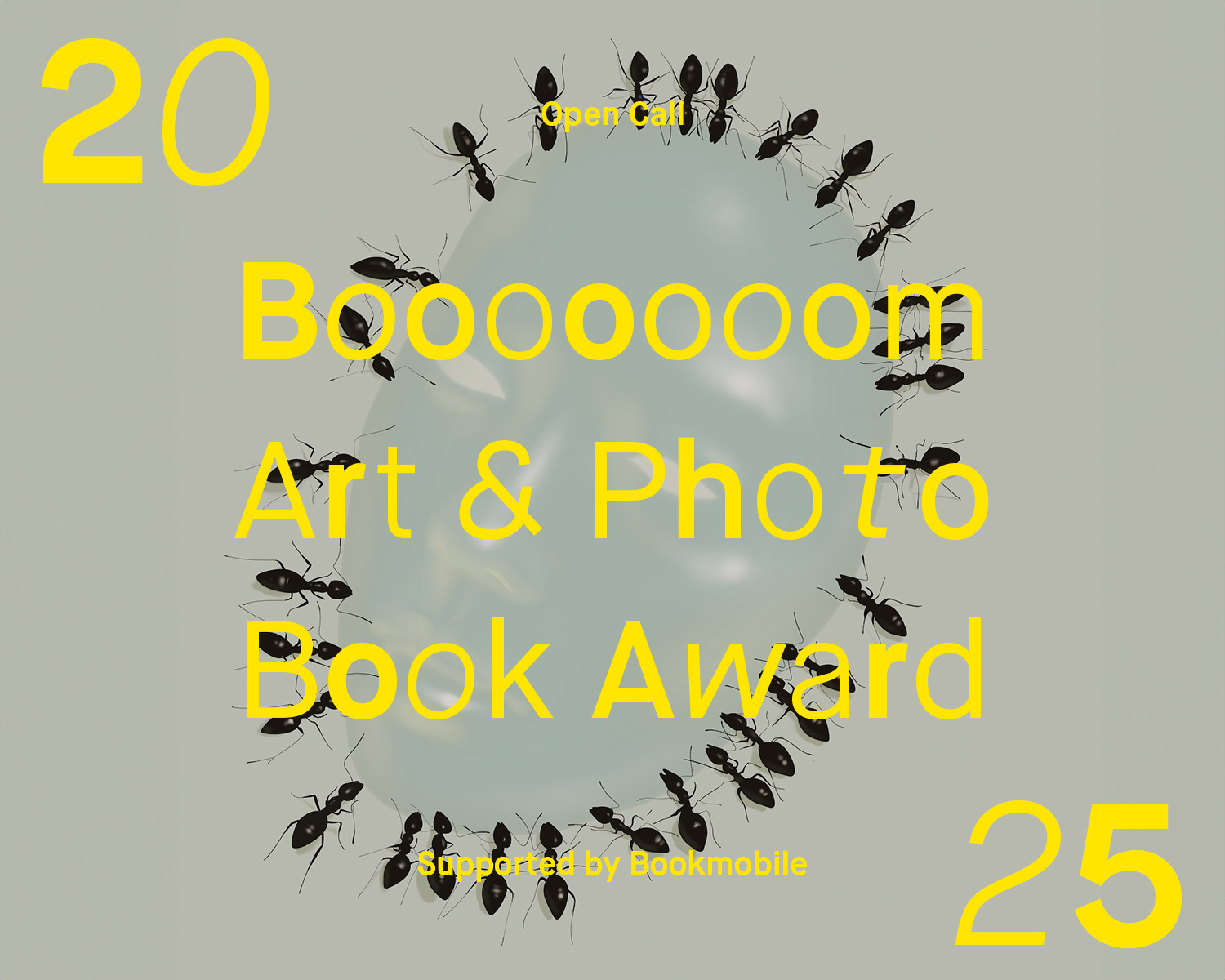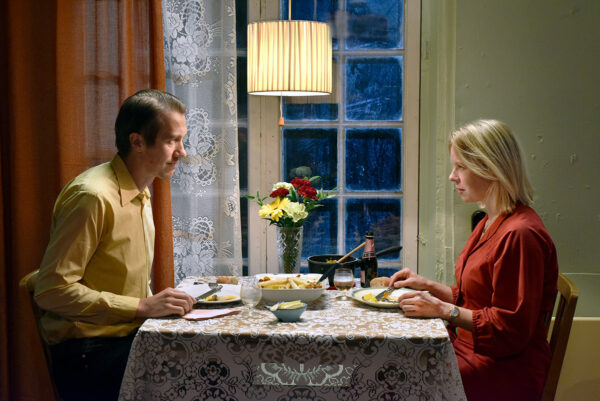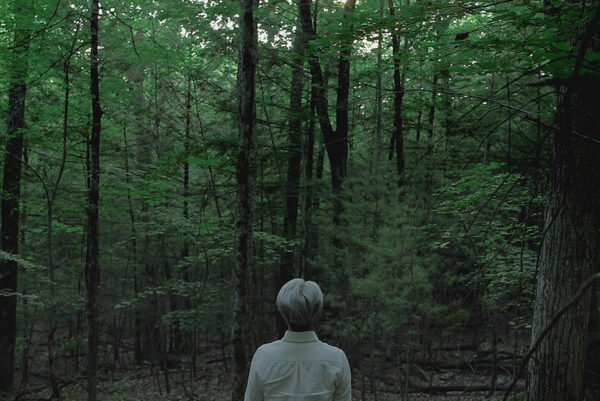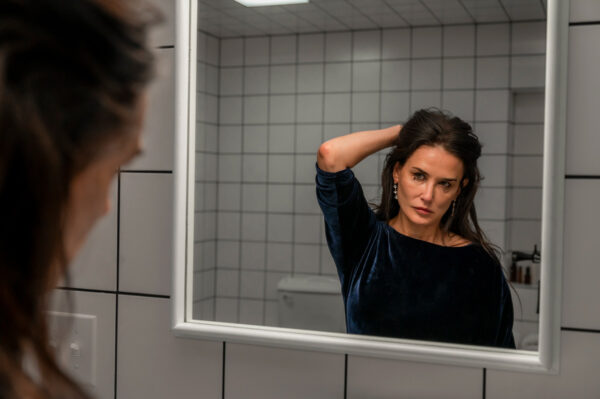In the lead-up to the 97th Academy Awards next month, there’s one film we hope won’t be overlooked. While The Girl with the Needle has already received critical acclaim–competing for the Palme d’Or at the 77th Cannes Film Festival, hitting the National Board of Review’s Top 5 International Films of 2024, and being Denmark’s entry for Best Foreign Language Film at the Golden Globes and Best International Feature Film at the Oscars–it is one of the most memorable and masterful films we’ve come across in a long time.
Written and directed by Swedish-Polish director and screenwriter Magnus von Horn (The Here After, Sweat), The Girl with the Needle is a period horror-drama that plays out like a dark fairy tale, with elements that feel simultaneously familiar and modern, eerie and exquisite. This is due in no small part to its haunting score by Frederikke Hoffmeier a.k.a. Puce Mary and gorgeous cinematography by Michał Dymek. In fact, the film took home the Camerimage Film Festival’s Golden Frog in Toruń, Poland last year, beating out Lol Crawley’s work on the artistic epic (and Oscar Best Picture frontrunner) The Brutalist.
The Girl with the Needle is set in Copenhagen at the end of the First World War and follows a young factory worker named Karoline (Vic Carmen Sonne), who is struggling to survive in the absence of her husband, Peter (Besir Zeciri). Deemed missing in action and presumed dead, Peter’s sudden re-emergence finds Karoline even worse off than before: unemployed, pregnant, and desperate. It is in this state that Karoline crosses paths with a mysterious woman named Dagmar (Trine Dyrholm) who offers Karoline a solution to her troubles.
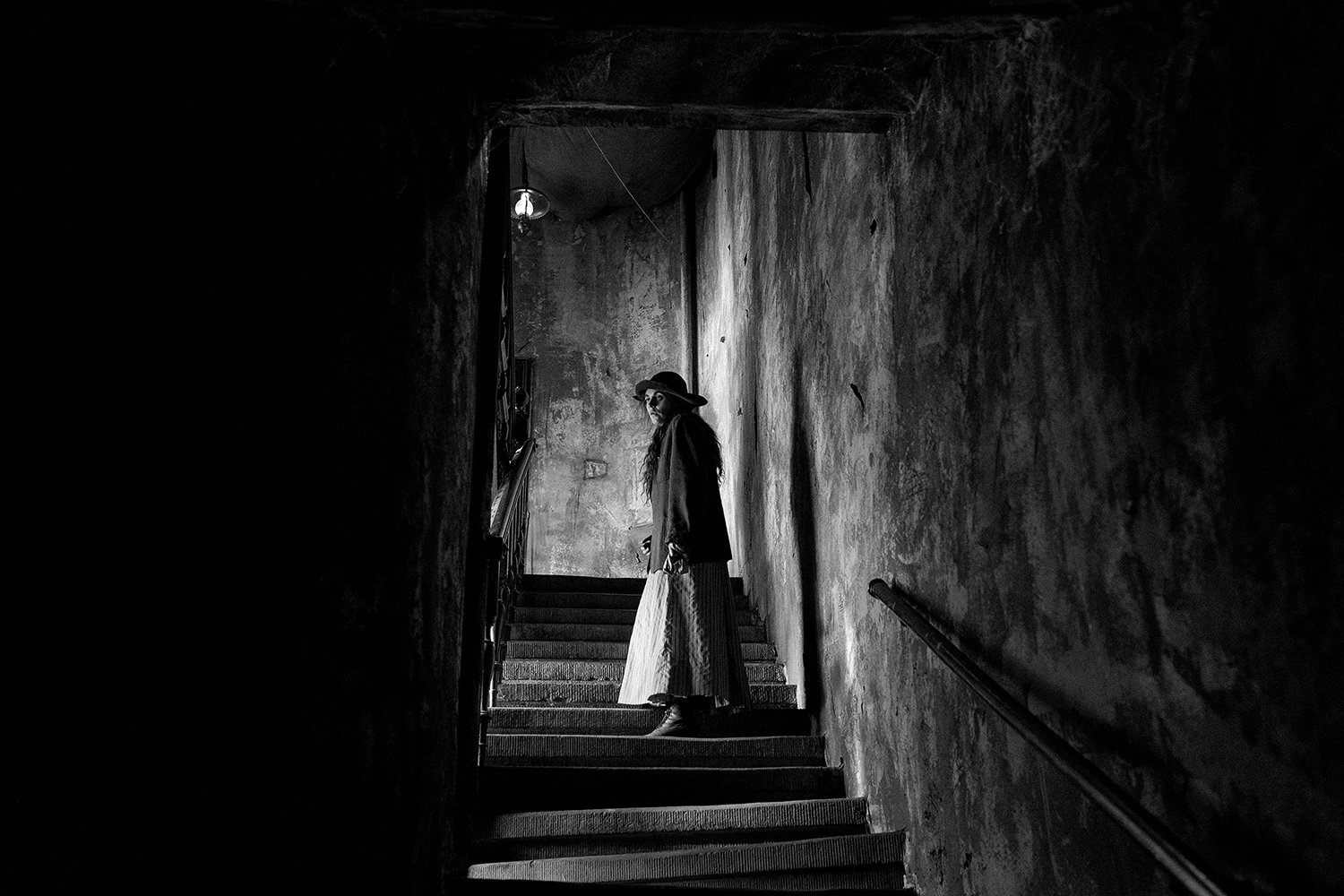
Drawn to the only source of kindness and reprieve from the chaos and cruelty of the world around her, Karoline starts working for Dagmar, helping her run an underground adoption agency for women facing similarly dire circumstances and children they cannot afford to keep.
The simple fairytale themes of monsters and maidens, good and evil, that run throughout the film are complicated by the overarching tension between what we are shown on the surface and the ugly truth that lies beneath. For example, the juxtaposition between Karoline’s boss (her seeming white knight) and her horribly disfigured husband. Or Dagmar, who stresses–“We just need to look our best”–as she scrambles to get herself dressed before facing her accusers. And yet, even Dagmar’s underlying darkness is treated with unexpected restraint.
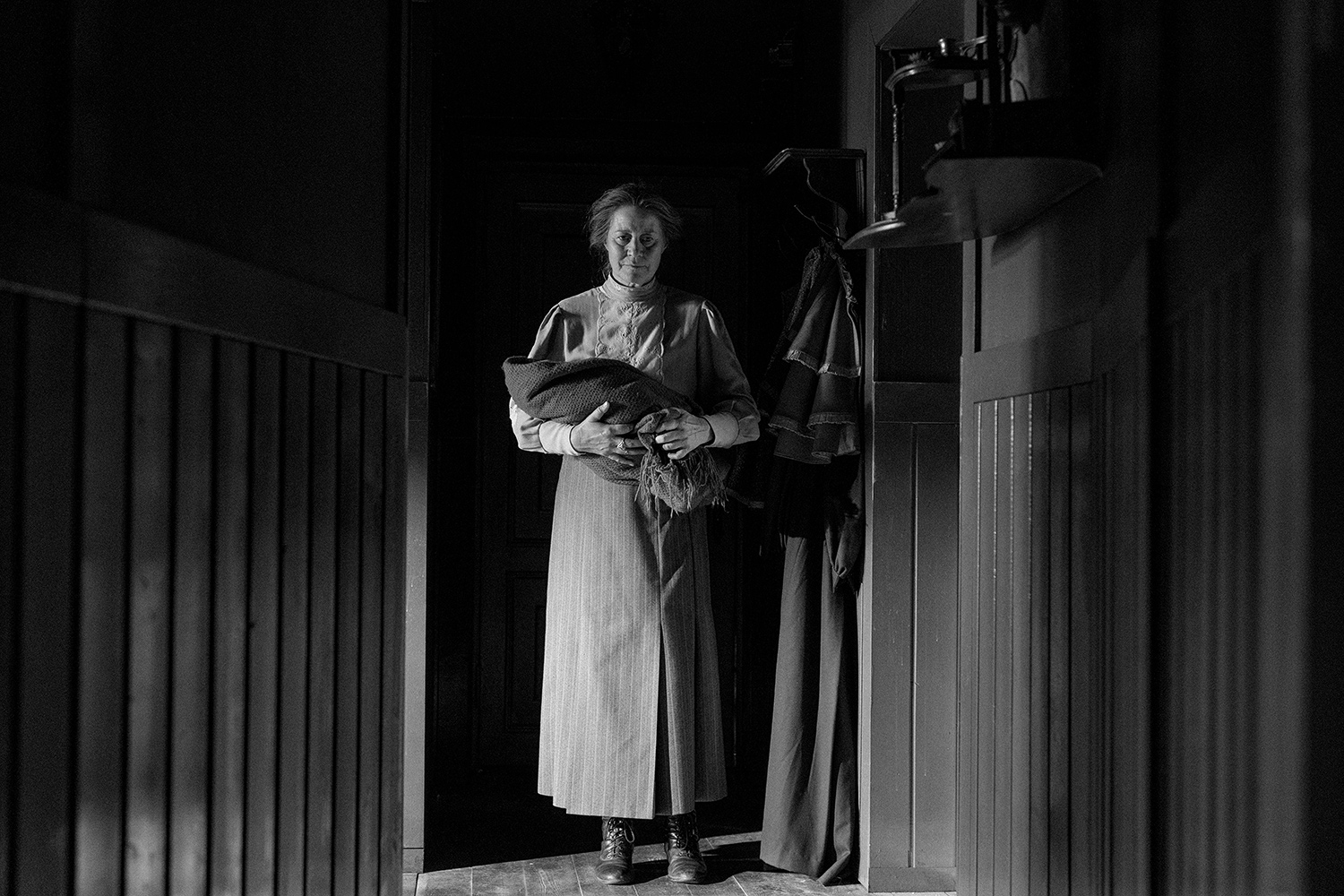
Dagmar could easily become the trope of the evil witch (in a candy store, no less), but the brilliance of the film lies in the viewer’s gradual inability to distinguish one horror from another, one injustice from another, given that the story is filled with so many.
Who is to blame or even in a position to assign fault in a world where coldness and cruelty–toward women and children especially–has become a way of life?
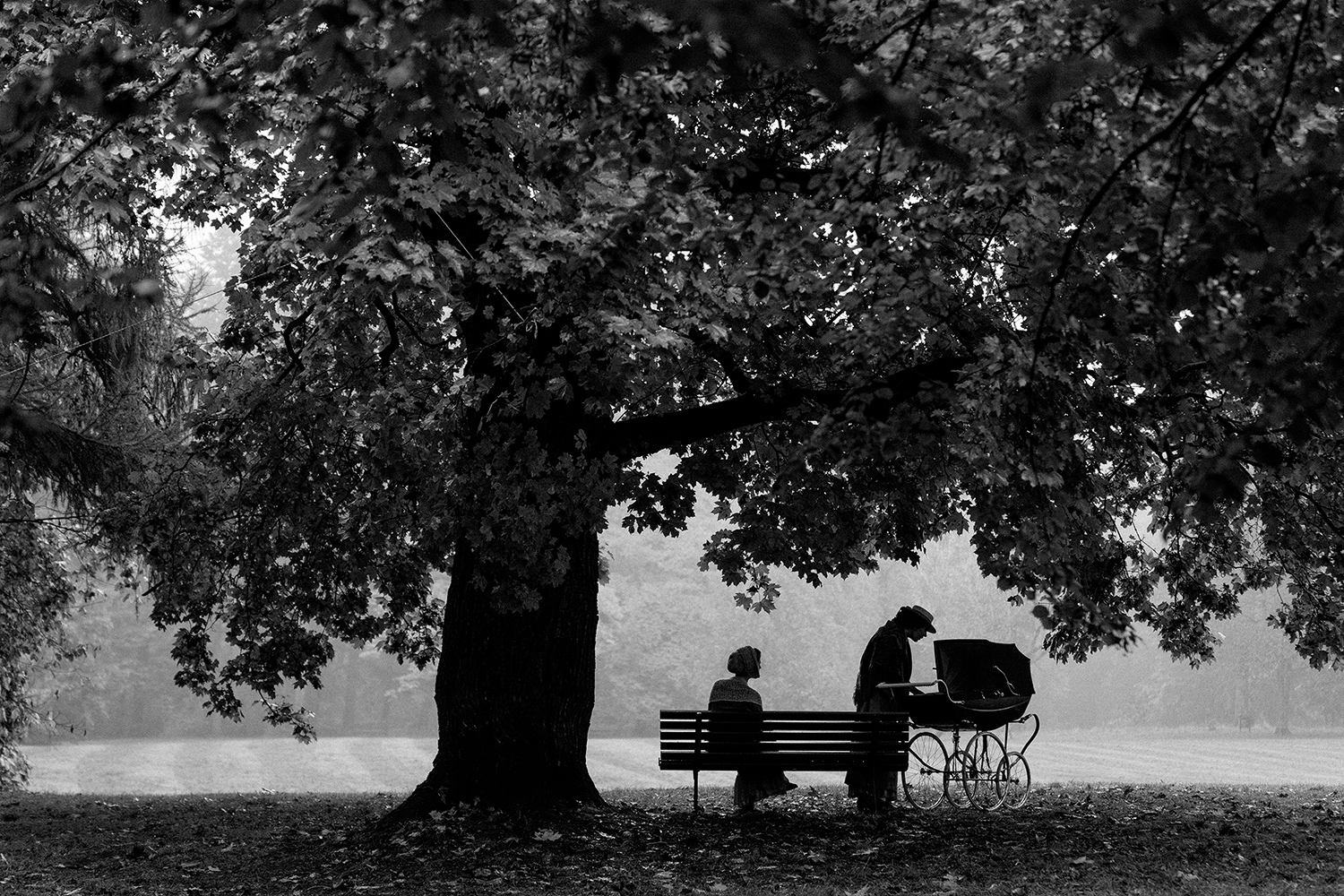
If Karoline’s main flaw is seeking comfort and escape from her reality, well, what is more human (or relatable) than that? As for the woman who offers her that respite, however rightly or (extremely) wrongly it’s accomplished, even director and co-writer Magnus von Horn places the emphasis of the storytelling on “us,” stating in his director’s notes:
This is the style we have chosen to use to tell a story that happened a long, long time ago but addresses a matter so close to us today: the unwanted, and what we ARE to do with them…. For a woman like Karoline, life becomes a living hell–and with this film I wanted to explore if it is possible to be good in hell. The Girl With The Needle is inspired by true events surrounding the most controversial murder case in Danish history. A national trauma that echoes through time and can still today remind us of what it means to turn a blind eye to the horrors in society.
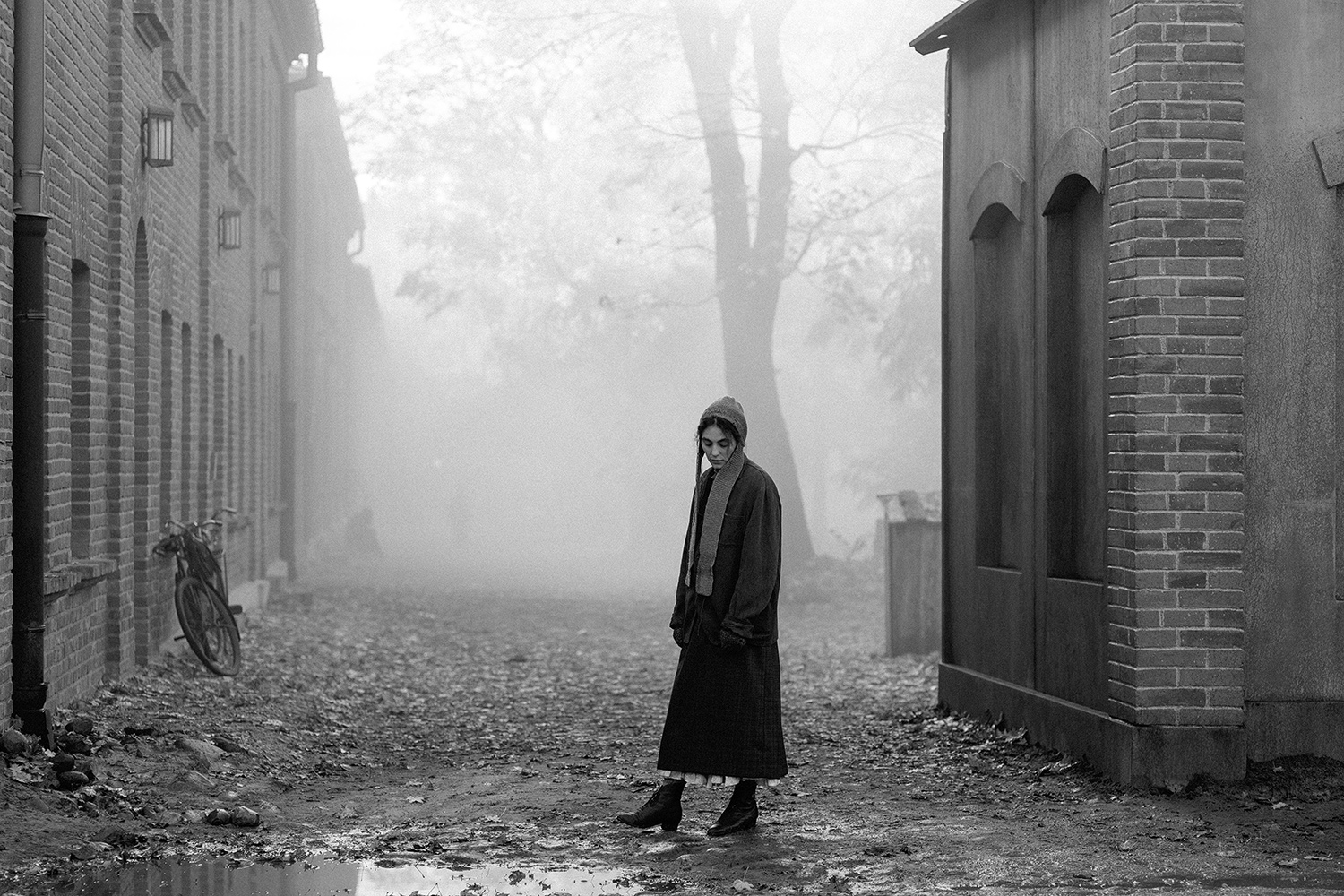
At one point Dagmar addresses her audience (of which we are a part): “I only did what you’re too scared to do. You’re too scared to admit it.” In this, and many visceral ways, the film can be difficult to watch. But it would be reductive to dismiss it as mere “horror” or “true crime” sensationalism. While the film does draw on real, historical events, the overarching themes of monstrosity and inhumanity are more complex than the actions of a single individual.
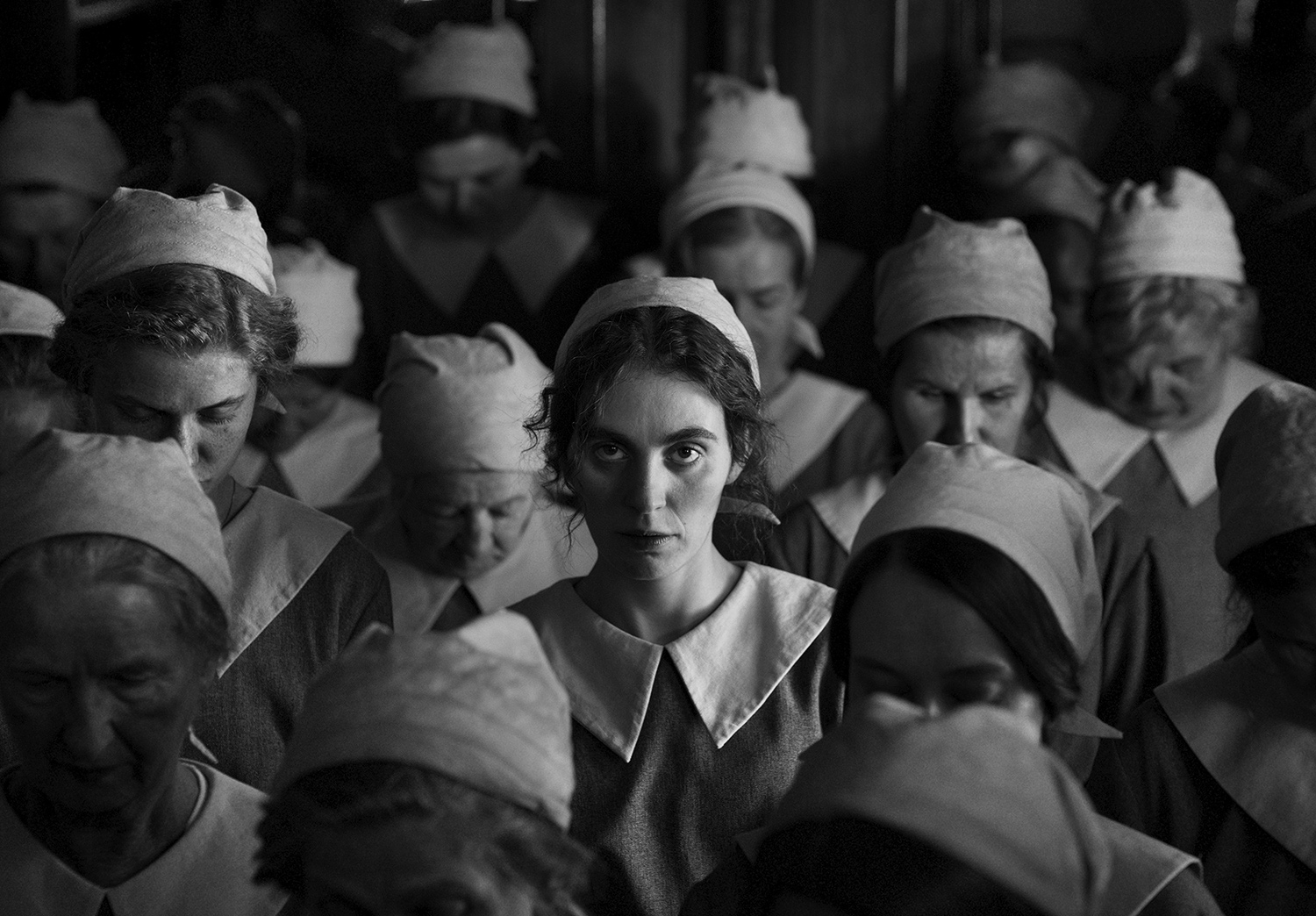
Just as the interior mind or motivation behind anyone’s actions is something we, as outsiders, can never know for sure, what remains in this film is a genuine curiosity if not empathy–a deep desire to understand rather than stand simply in judgement.
The Girl with the Needle is now streaming on MUBI. Watch this and hundreds of other hand-picked films with 30 days free at mubi.com/booooooom.
2025 Art & Photo Book Award
Wanna turn your art or photos into a book or a zine? Here’s your chance, we’re picking 9 people!
Learn moreJoin our Secret Email Club
Our weekly newsletter filled with interesting links, open call announcements, and a whole lot of stuff that we don’t post on Booooooom! You might like it!
Sign UpRelated Articles
